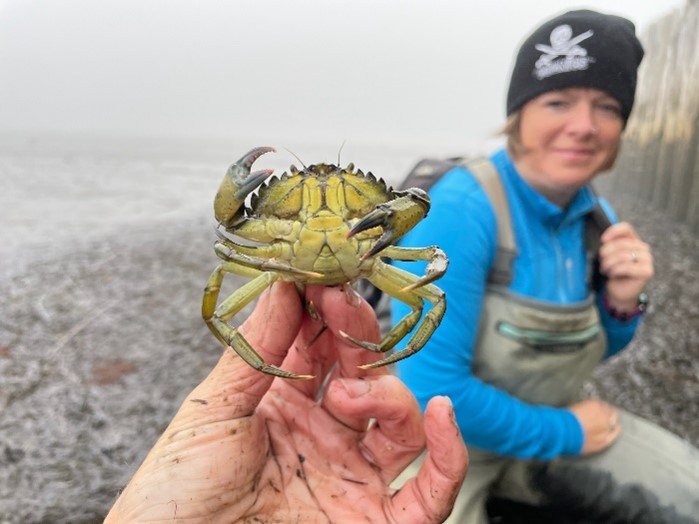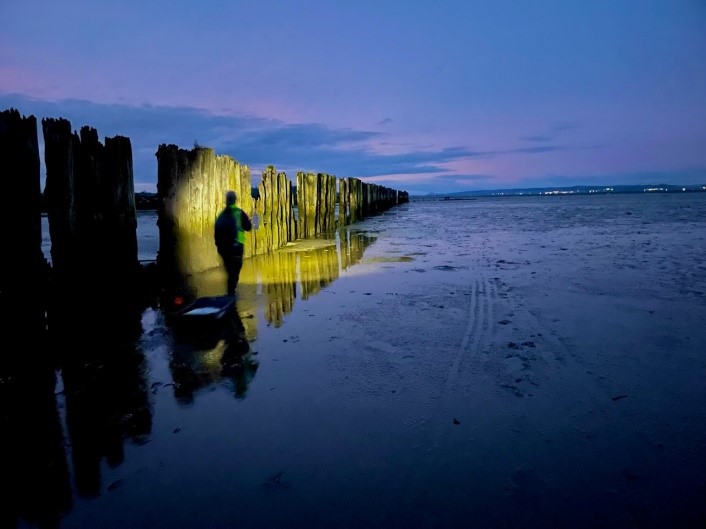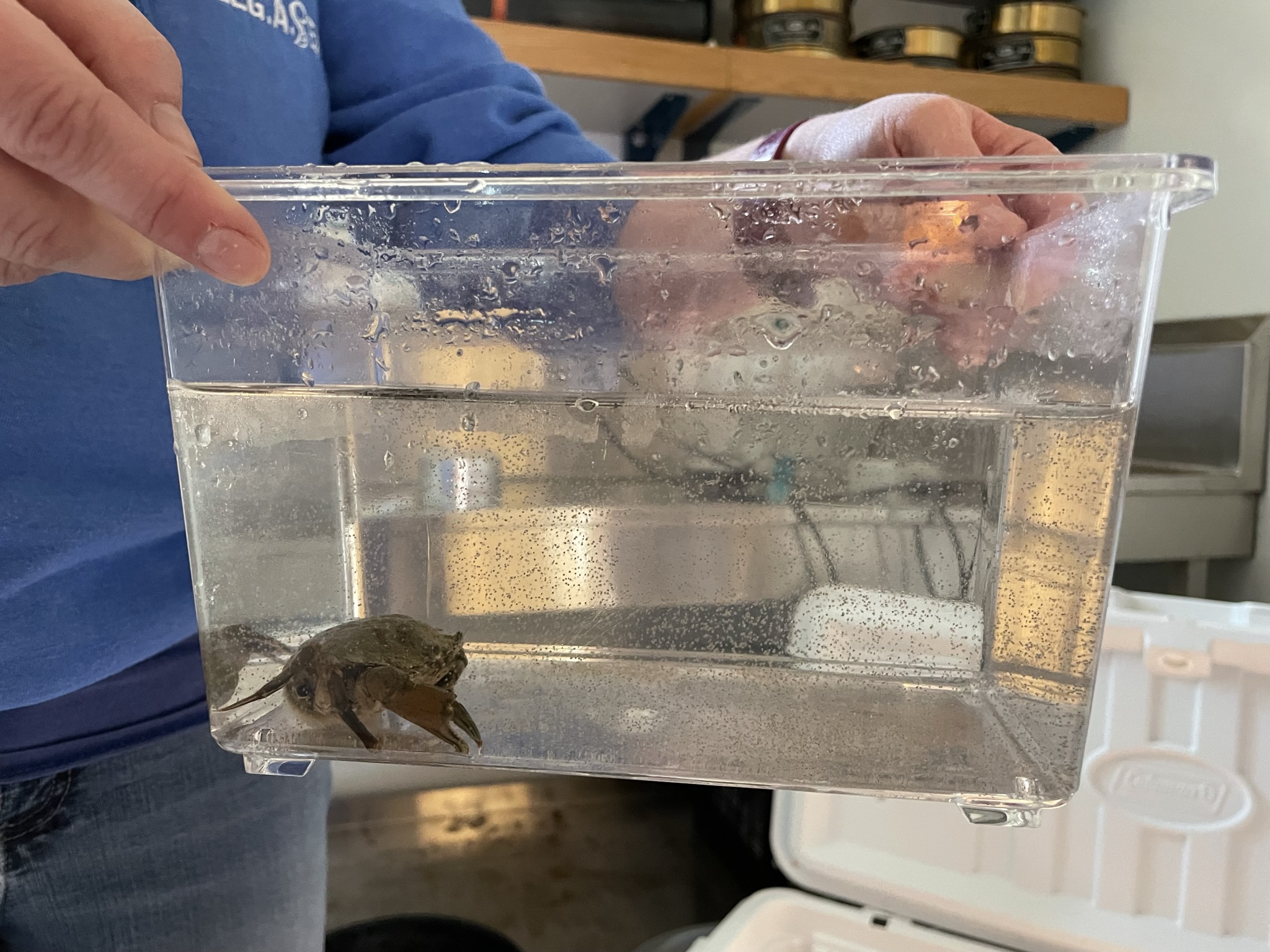Padilla Bay newsletter
Our e-newsletter is published quarterly with current events, articles, and program information.

Padilla Bay researcher Nicole Burnett eyes a European green crab.
Trapping an unwelcomed crab
One way we steward our waters here at Padilla Bay Reserve is by monitoring and removing invasive European green crabs, first found in the bay in 2016. Since then, Padilla Bay numbers have been low, with only 23 EGCs caught between 2016 and 2021. This year was also looking good — until October. From the beginning of October to now, we’ve captured 50 European green crabs, bringing the total for this year to 58.
European green crabs are one of the worst invasive species in the world. They are omnivores and can devour all the young clams, oysters, and shore crabs in an area if the population is left unchecked. Eelgrass is also a favored food item, and the crabs’ burrowing can destroy both eelgrass and saltmarsh meadows. They also appear to aggressively compete with young native Dungeness crabs for habitat and food.
In addition to trapping throughout Padilla Bay, we also help local partners monitor nearby areas. Padilla Bay staff helped train a Washington Conservation Corps (WCC) crew to lead trapping efforts in nearby Samish Bay. We also joined an intensive trapping assessment in adjacent Fidalgo Bay. Led by the Northwest Straits Commission, we trapped alongside Washington Department of Fish and Wildlife, Washington Department of Natural Resources, Washington Sea Grant, WCC, Samish Indian Nation, Swinomish Indian Tribal Community, and Veterans Conservation Corps. Over the course of one week, 23 people set 736 traps in Fidalgo Bay. Encouragingly, no European green crabs were found during that trapping event.

Angelica Luccetto retrieves crab traps along tide flats during early morning hours.

A proud mother European green crab is surrounded by her swimming progeny.
Baby crabs are cute — or are they?
Considered one of the world’s most damaging marine invasive species, European green crabs have hit headline news in Washington state because this non-native crab has increased in numbers this year and has spread to more locations in the region. This includes an uptick in the number of European green crabs found in Padilla Bay. So how do European green crabs spread, and can scientists predict where they will go next?
Like all crab species, European green crabs reproduce by releasing tens of thousands of floating, microscopic young which get carried by ocean currents to new locations. Scientists can monitor young crabs in the water by collecting water samples with a special net and then identifying all microscopic animals in the samples. This gets tricky when young European green crabs mix with young native crabs in the water at the same time. Although the differences between an adult Dungeness crab (for example) and an adult European green crab are obvious, the microscopic babies of different crabs are hard to tell apart. Also, the microscopic young look nothing like the adult.
This past spring, the Padilla Bay research team sought to determine how to tell microscopic European green crab babies from those of other native crabs that might be in the water. The surefire way to know what the young form of a specific crab looks like is to start with an adult crab with a known identity that is carrying eggs, and then raise the young to see what they look like.
This past spring, Padilla Bay staff were given two female European green crabs carrying eggs (see photo). The eggs were hatched from the two crab mothers, and the young were carefully raised. We used detailed techniques in a permitted quarantine lab to prevent any possible escape to Padilla Bay waters. While care for hundreds of crab babies 24/7 required all hands on deck, we were able to study specific characteristics of the microscopic invaders that could be used to distinguish them from babies of other native crabs in the water.
Being able to positively identify European green crab babies is a stepping stone for detecting whether European green crab young are spreading around in Padilla Bay waters. This work also supports future research to understand when the young hatch in nature and where they are going within the Salish Sea and elsewhere.

European green crab from eggs to zoea (larval phase) to adult.
Contact information
Chandler Colahan
Education & Community Outreach
ccolahan@padillabay.gov
360-428-1080

